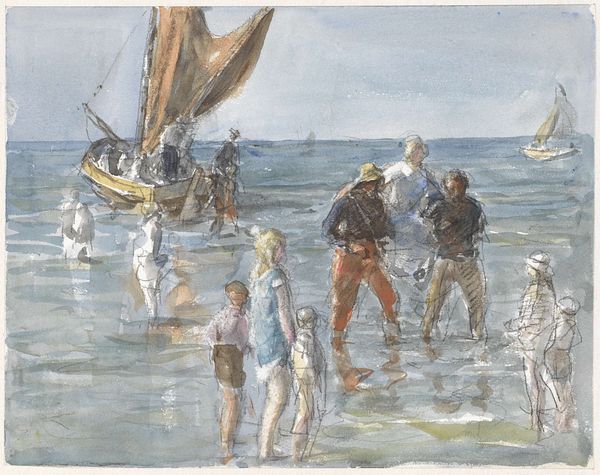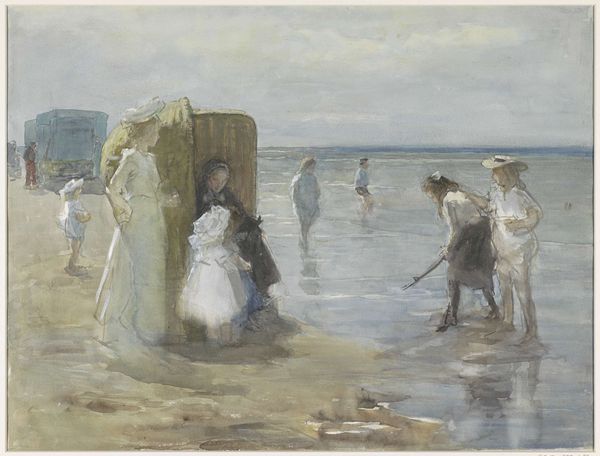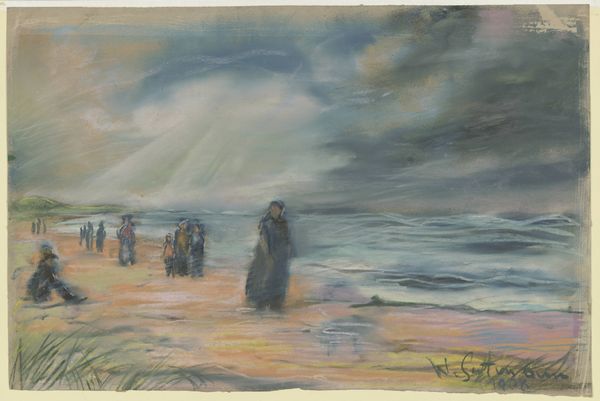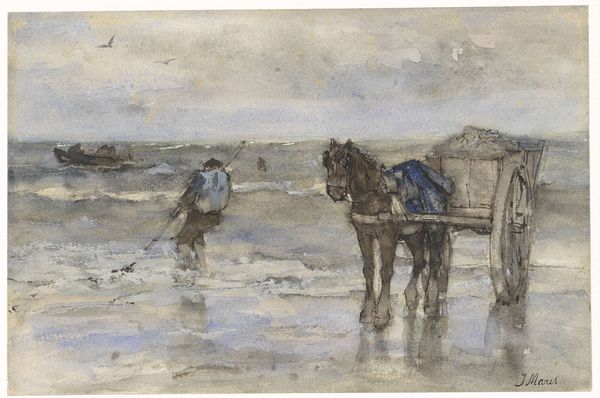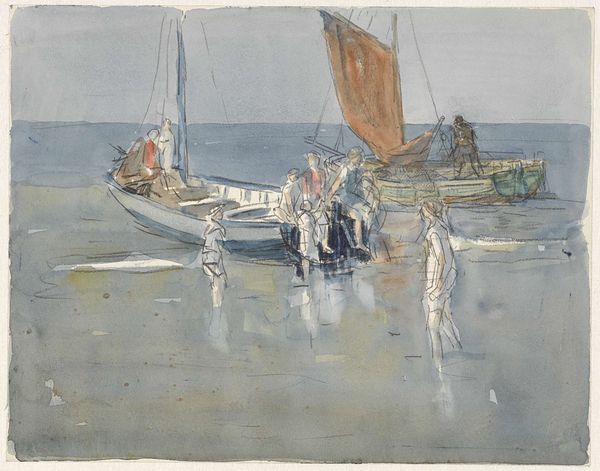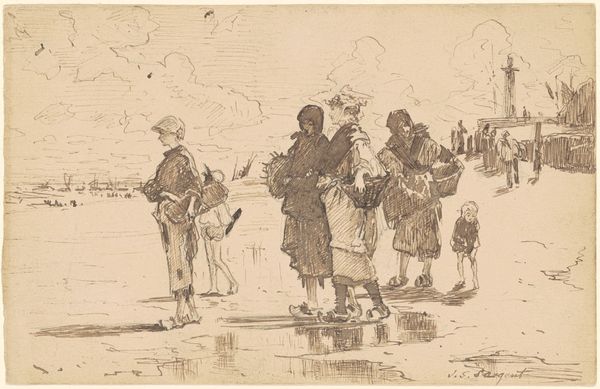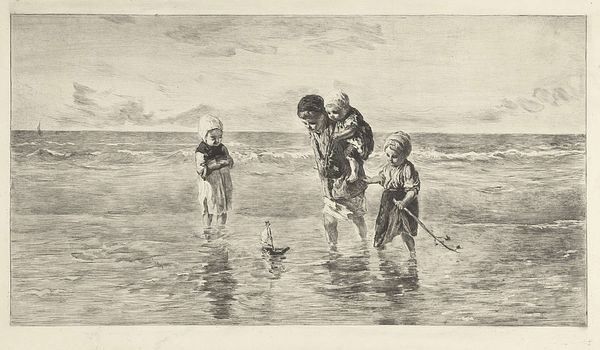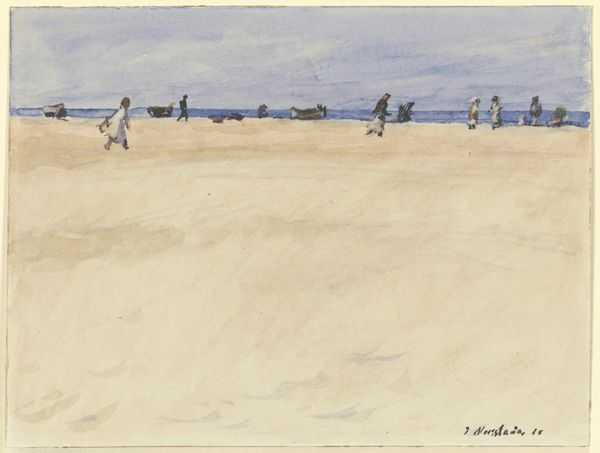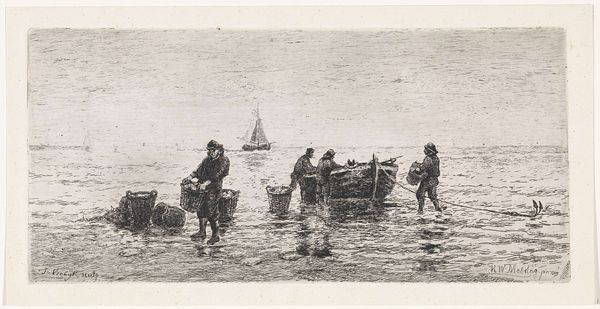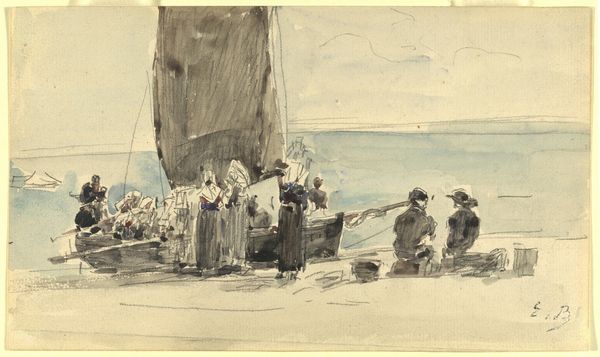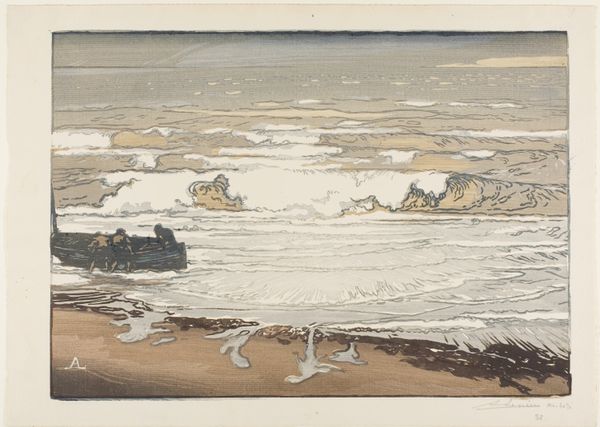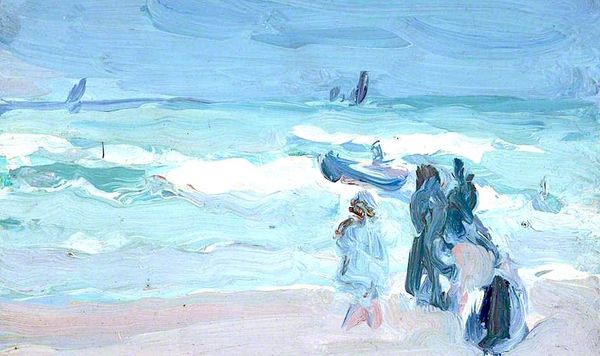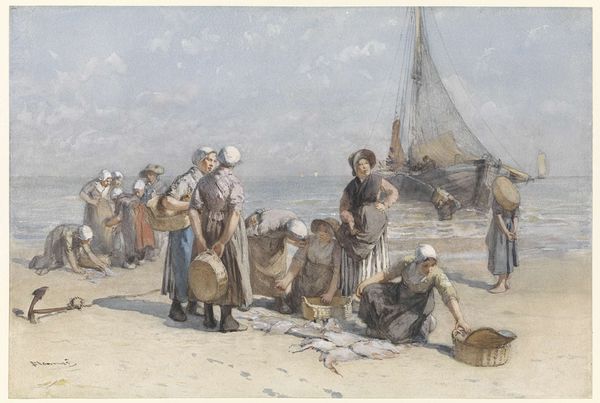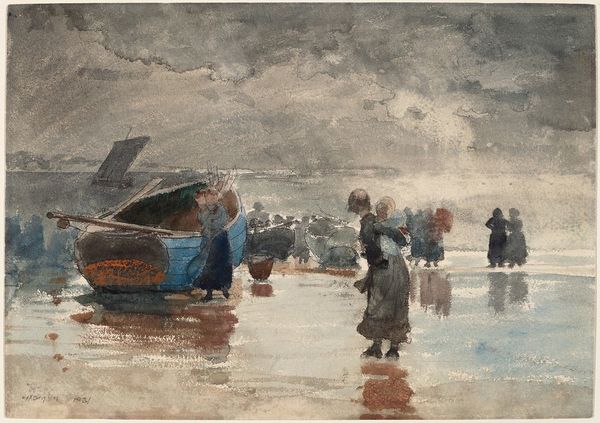
Vissersschuit, omgeven door kinderen, op het strand van Scheveningen 1874 - 1927
0:00
0:00
Dimensions: height 253 mm, width 354 mm
Copyright: Rijks Museum: Open Domain
Curator: What strikes me immediately is the hazy, almost dreamlike quality of this beach scene. Editor: Indeed. What we are looking at is a watercolor and oil painting, titled "Vissersschuit, omgeven door kinderen, op het strand van Scheveningen" – loosely translated as "Fishing boat surrounded by children, on the beach of Scheveningen". It's an undated piece, but likely completed between 1874 and 1927, by Johan Antonie de Jonge. The application of media looks particularly interesting: there’s a sense of immediacy that you don’t always get with works using both oil and watercolor. Curator: It’s the kind of image that invites you to consider the labor involved. Imagine the physical effort to drag that boat onto the shore and the collaborative production inherent in fishing communities. The presence of so many children suggests a social environment where work and leisure are intertwined. Editor: And how that labor and lifestyle became a spectacle, then, a marketable image, feeding the romantic desires of a growing art market. Consider how Scheveningen transformed from a fishing village to a resort town precisely during that period, boosted by images like these that romanticized its hard-working past. Curator: Exactly. The visible brushstrokes and translucent quality of the watercolor contribute to this sense of fleeting momentariness but simultaneously give the artwork an "unfinished" feel, drawing attention to the artist's hand. It disrupts the illusion and shows the constructedness of the scene itself. We can see this wasn’t actually painted en-plein-air but it captures something unique regardless. Editor: Looking at the clothing, though – especially those simple hats – one has to ask what societal structures governed their access to resources and recreation, compared to the more privileged classes consuming these images. These children were possibly helping bring in the boats with adults. The sailboats on the horizon perhaps carried those wealthier classes. Curator: It truly becomes an intersection of economic reality and idyllic representation, doesn’t it? It reveals as much about the art market and social class structure as it does about the visible reality it seeks to convey. Editor: A painting about work, leisure, and perhaps above all, about the marketing of an identity. Thanks for walking me through the intricacies in the materiality of such a work!
Comments
No comments
Be the first to comment and join the conversation on the ultimate creative platform.
